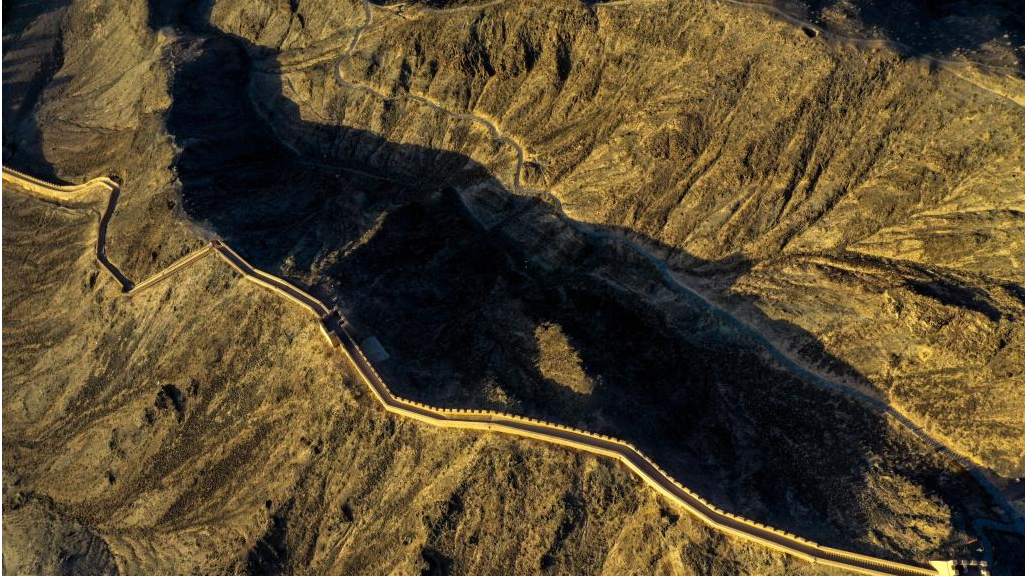
LANZHOU - Nine sections of the Great Wall, believed to date back over 2,000 years, have been discovered in Northwest China's Gansu province, according to local archaeologists.
They were found in Jingyuan county in Baiyin city, and based on features such as the thickness of the rammed earth layers, archaeologists had initially concluded that the walls were constructed during the Qin Dynasty (221 BC-207 BC).
Among these sections is the Yingu Great Wall, where the loess colors of the rammed earth layers on the east and west sides differed, suggesting they were constructed at different times, according to Du Baoze of the cultural relics protection office of Jingyuan.
READ MORE: Museum face-lift to offer new perspective of Great Wall
The remaining wall on the east side, resembling a mound, stood 5.2 meters tall, 4.5 meters wide and 11 meters long. By comparing it to beacon towers built during the Ming Dynasty (1368-1644), the archaeologists believe it exhibits characteristics of the Qin Great Wall, while the west side appears to have been repaired during the Ming Dynasty.
The Yushugou, Longhuangshui and Huangtianqi sections of the Great Wall share the same stone wall structure, suggesting they were built at the same time. Most of the stone walls were constructed in areas of strategic importance, often between canyons or on terrain that offered natural defensive advantages. This aligns with the characteristic feature of the Qin Great Wall, which was designed to follow the terrain, enabling builders to capitalize on natural defenses while minimizing construction efforts.
The discovery was made during the fourth national cultural heritage survey, which was launched in 2023 and will run through 2026. This ongoing survey is China's first national cultural heritage survey in over a decade.
According to Zhang Hongwei, guide of the archaeological survey team in Jingyuan and a local researcher, sections of the Great Wall from different periods in Chinese history serve as a museum. "Studying the Great Wall ruins is crucial for understanding the historical features of those times, the relationships between different ethnic groups, and the geography of ancient China," he said.
The Great Wall, a UNESCO World Heritage Site, consists of many interconnected walls, some of which date back more than 2,000 years.
READ MORE: Award-winning protector still passionate for Great Wall
The oldest sections of the Great Wall were built during the reign of the first emperor of the Qin Dynasty, who ordered its construction as a defense against northern tribes.


